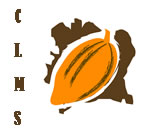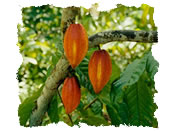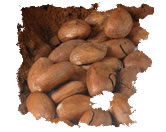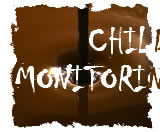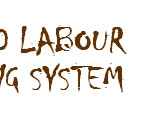|
|
|
| |
|
| |
The mechanism of certification
|
|
By not taking an active part in the process of the design of the system of certification, Côte d'Ivoire may see its cocoa forbidden in the U.S. market by July 1 st 2005. Therefore, the country must commit itself with the signing of the September 2001 protocol in order to manage actively and positively the countdown towards the deadline. |
|
|
|
|
|
|
|
The basic principles of the mechanism of the certification have been more and more designed through the following process described below :
|
| |
 |
A first touch-base meeting with the Global Issue Group (GIG), including the chocolate industry representatives, traders and auxiliaries of the cocoa industry (June 2003)
|
| |
 |
A Memorandum of Understand between ILO and the Ivorian government, stressing the commitment of both parties to combat the child labor trafficking
|
|
 |
An international seminar on the process of the cocoa certification on May 26-28, 2004, with the participation of key stakeholders, including local, sub-regional and
international partners. Our country has fully played its leadership role, giving an example which resulted in several cooperation requests from other producing countries ( Ghana ).
From the workshop, one of the key recommendations has been the creation of a strategic specialized group, as a watchdog, and dedicated to the child labor issue in order to obtain the certification
of the cocoa. This group is called Côte d'Ivoire Cocoa taskforce chaired by the Prime Minister's Office and including the key stakeholders in the cocoa sector interested in exporting
to the U.S. ( cocoa supply chain and APEX-CI) |
|
| |
|
The entire mechanism of certification is composed of four levels described in the diagram below : |
| |
 |
The first level is related to the setting of social programs of prevention as well as other capacity building programs.
|
|
| |
 |
The second level is related to the implementation of the child labor monitoring system
|
| |
 |
The third level is related to the independent verification
|
| |
 |
The last level is related to the issuance of the certification.
|
| |
|
|
|
|
|
|
WACAP, schools and training of engineers, STCP
|
| |
|
This model of certification must allow the Ivorian government, ILO, IPEC, to the cocoa industry and to other partners for joint activities.
|
However, this model does not provide any practical details to undertake specific actions until the July 1st 2005 deadline. Therefore, such a pilot project has been necessary to implement in order to help test this scheme on the grounds before being finally adopted and scaled up in all cocoa producing areas in Côte d'Ivoire.
| |
More specifically, the test to be undertaken deals with two basic levels, i.e. ., the social programs and the child labor monitoring system (CLMS). These are the foundations of the CLMS pilot project that Côte d'Ivoire, though its Côte d'Ivoire Cocoa Taskforce (CI-CTF) has designed with the support of the chocolate industry and the cooperation of the IPEC/ILO. The objective is to implement an efficient monitoring on the child labor. |
| |
|
The project implementation must comply with the following conditions : |
| |
1. |
The monitoring must be in place during the key cocoa production campaign of 2004/2005 and must start by October 2005.
|
| |
2. |
The monitoring activities must cove a production zone of a minimum of 20,000 tons of cocoa on an annual basis, with a convenient number of villages). This zone must have very active organizations of cocoa producers.
|
| |
3. |
The presence of reliable partners, both on the institutional and social level.
|
|
|
|


